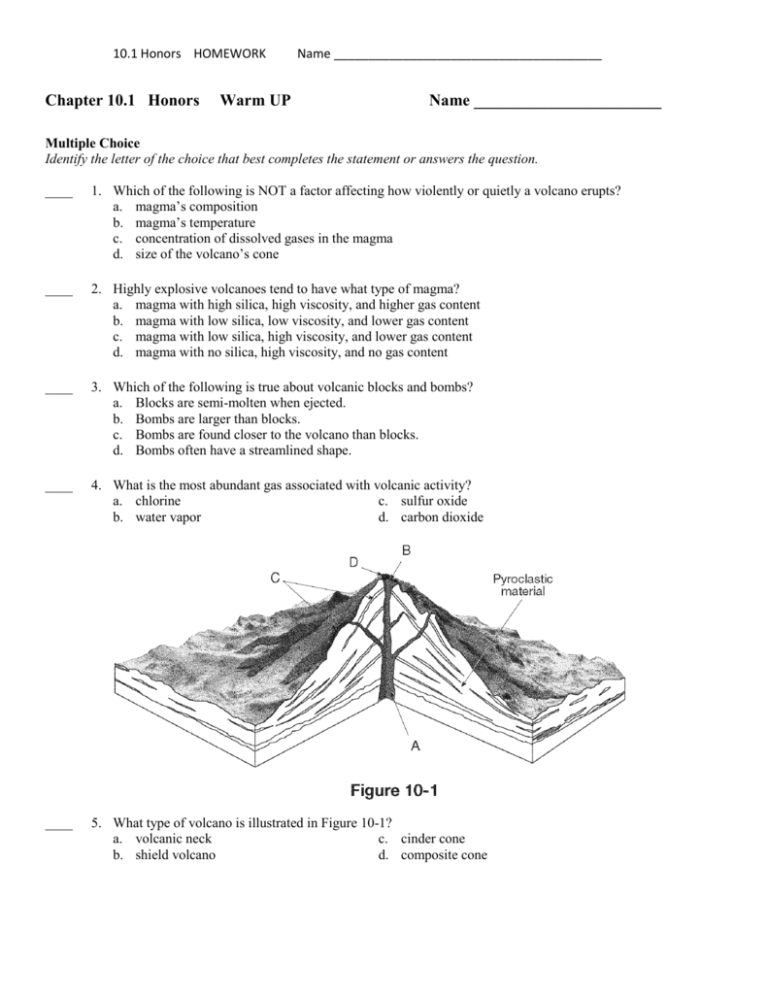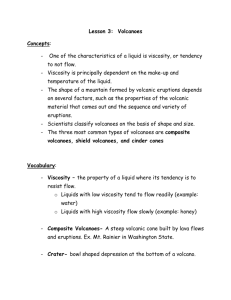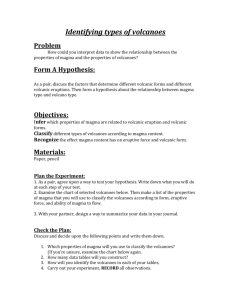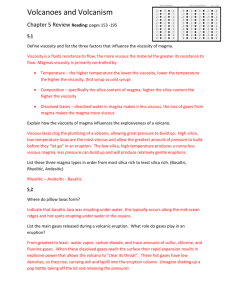10.1 Honors Warm Up and Homework - rdt
advertisement

10.1 Honors HOMEWORK Chapter 10.1 Honors Warm UP Name _______________________________________ Name _______________________ Multiple Choice Identify the letter of the choice that best completes the statement or answers the question. ____ 1. Which of the following is NOT a factor affecting how violently or quietly a volcano erupts? a. magma’s composition b. magma’s temperature c. concentration of dissolved gases in the magma d. size of the volcano’s cone ____ 2. Highly explosive volcanoes tend to have what type of magma? a. magma with high silica, high viscosity, and higher gas content b. magma with low silica, low viscosity, and lower gas content c. magma with low silica, high viscosity, and lower gas content d. magma with no silica, high viscosity, and no gas content ____ 3. Which of the following is true about volcanic blocks and bombs? a. Blocks are semi-molten when ejected. b. Bombs are larger than blocks. c. Bombs are found closer to the volcano than blocks. d. Bombs often have a streamlined shape. ____ 4. What is the most abundant gas associated with volcanic activity? a. chlorine c. sulfur oxide b. water vapor d. carbon dioxide ____ 5. What type of volcano is illustrated in Figure 10-1? a. volcanic neck c. cinder cone b. shield volcano d. composite cone 10.1 Honors HOMEWORK Name _______________________________________ ____ 6. Which of the following plays a major part in determining the form of a volcano? a. elevation above sea level c. magma composition b. local soil type d. nearness of other volcanoes ____ 7. Which of the following is true about cinder cones? a. They have very steep sides. b. They are usually less than 300 meters high. c. They often occur in groups. d. all of the above ____ 8. The most violent volcanic eruptions are associated with what type of volcano? a. cinder cones c. composite cones b. shield volcanoes d. fissure eruptions ____ 9. Crater Lake in Oregon was produced when ____. a. a lava dam blocked a river b. a large explosion blew out the side of a large volcano c. the summit of a volcano collapsed d. a lava flow erupted from a volcano ____ 10. The greatest volume of volcanic material is produced by ____. a. cinder cones c. shield volcanoes b. fissure eruptions d. composite cones Completion Complete each sentence or statement. 11. The most explosive volcanoes are produced by magma with ____________________ viscosity that contains a large quantity of dissolved gases. 12. The most explosive volcanic eruptions come from the ____________________ type of volcano. Short Answer 13. Why are pyroclastic flows not commonly associated with shield volcanoes? Essay 14. List and describe the three main types of volcanoes.









